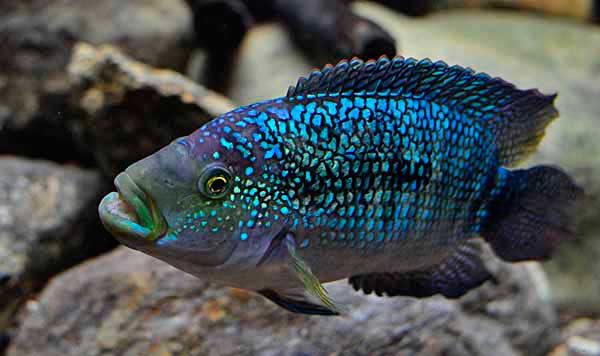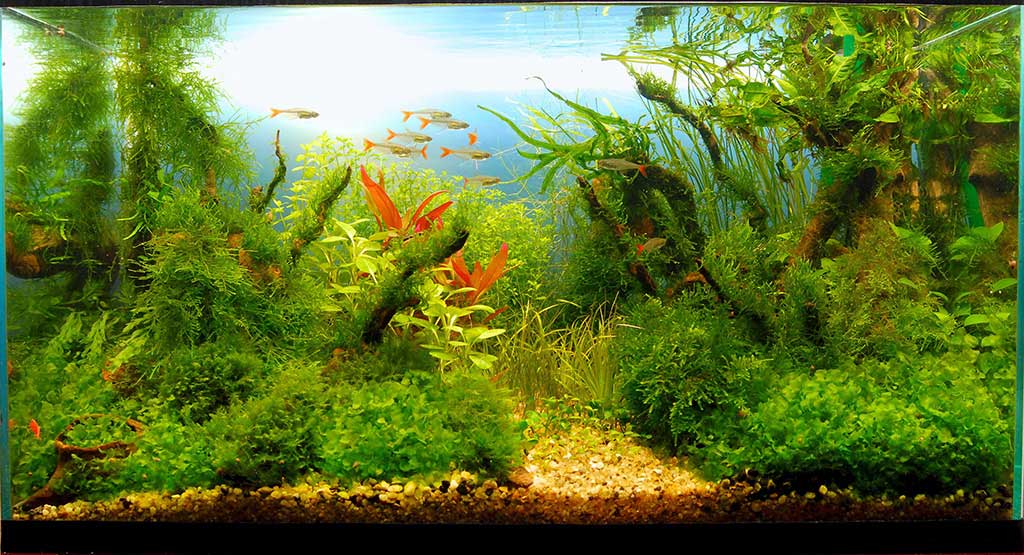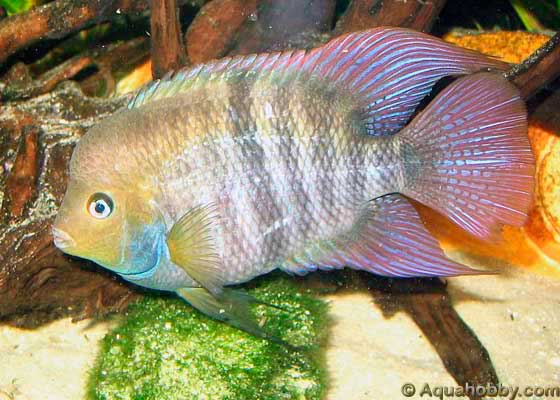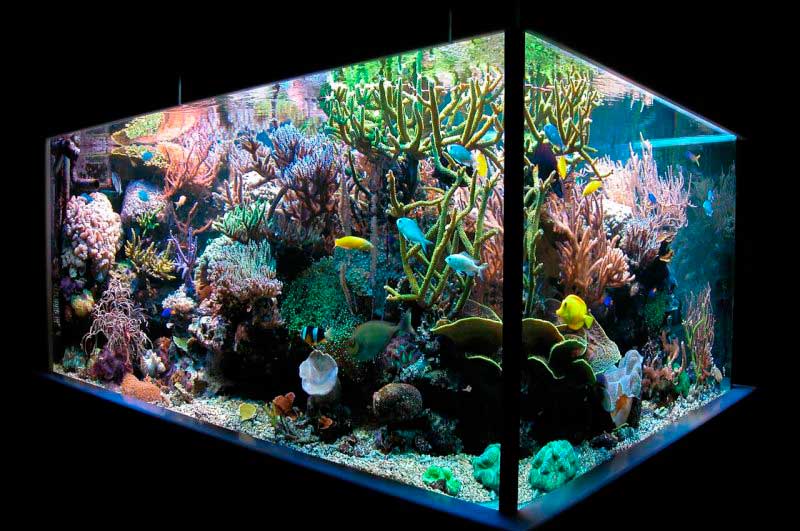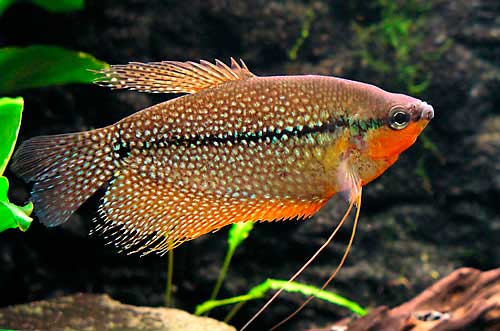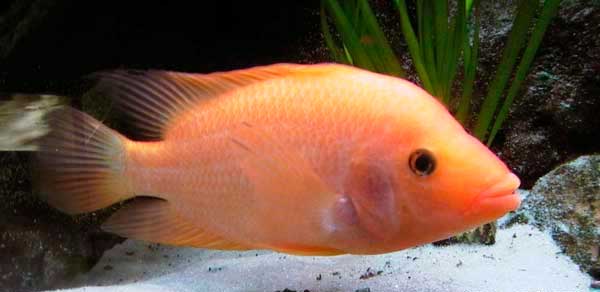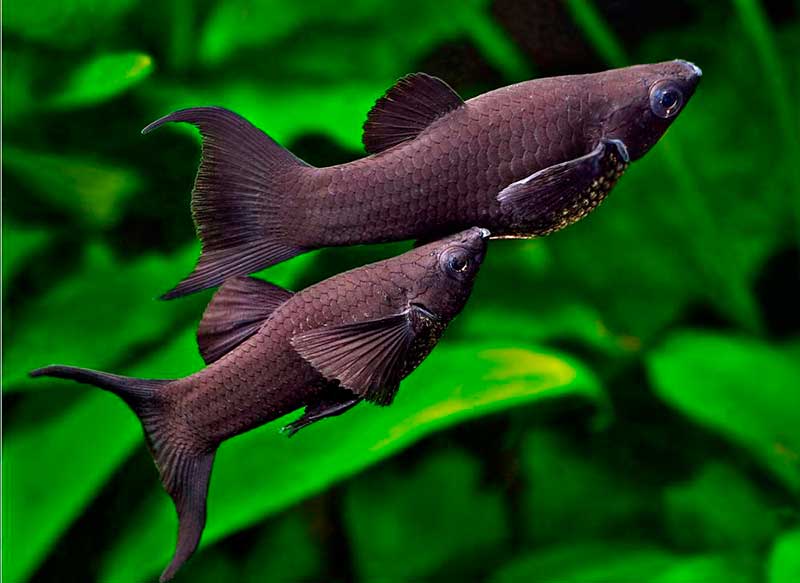Cichlasoma octopus is an amazingly beautiful fish, first described by Charles Regan as Heros octofasciatus. To the European aquarists cichlasoma bee first got around 1904. Fans of the USSR recognized it only by 1958. Despite the fact that it is contained behind the glass aquariums for more than a hundred years and since then there have been many other interesting species worthy of attention aquarists, cichlasoma biocelatum holds its position.
There are several reasons for that. Very beautiful coloring. Very unusual behavior. Careful, long-term care for offspring. Relatively small size, which allows you to equip for her relatively small aquarium, and this is essential for most modern apartments. All this despite the confusion of classification endowed this fish mass of names contributes to its continued popularity among aquarists around the world.
Synonyms: C. biocelatum, C. octocelatum, C. bee cichlasoma, Cichlasoma octofasciatum, Rocio octofasciata, Jack Dempsey
| kingdom | Animals |
| type | Chordates |
| class | Radiant fish |
| division | Perch |
| Family | Cichlids |
| genus | Rocio |
| species | Rocio octofasciata |
Habitat.: The C. bee inhabits water bodies of the Atlantic slope of Central America. From the Ulua River (Honduras) to the Papaloapan River (southern Mexico). It is also found in Guatemala and Belize.
They artificially populate water bodies of the southern United States (Florida, as well as some other areas adjacent to the Gulf of Mexico), Thailand, and Russia (formed a stable population in the flowing water-cooler of Krasnodar CHPP – lake “Staraya Kuban”).
Cichlasoma octopus Description of species
C. octopus is a relatively small species. In nature, reaches a length of up to twenty centimeters. Behind the glass aquarium rarely reaches a length of more than 12 centimeters. The body is tall flattened from the sides. Dorsal, anal fins stretch to the base of the caudal fin. Fry have from 8 black transverse stripes on the body that is reflected in one of the names of the species – eight stripes.
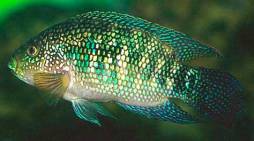
These same stripes are the reason for another Russian common name – C. bee. Another name – biocelatum – indicates the presence of dark spots on the sides and at the base of the caudal fin edged with a pearlescent border. These features are practically absent in adult ts. biocelatum, their appearance more accurately describes the name adopted by modern classification – Rocio octofasciata. Rocio – dew. Really adult ts. biocelatum, having the main color of the body dark blue, almost black, each scale has a pearlescent luster. This glitter, depending on the mood Ts. bee, as well as the angle of external light takes color from turquoise to golden. “Bee” as if all covered with dew shimmering with different colors in the morning sunlight.
Males are highly territorial. Their territoriality is manifested from the fry age. Occupying any secluded corner of the aquarium, they protect it and the adjacent territory. C. biocelatum facultatively monogamous. Prefers to spawn with the selected from the fry age of the pair. But harem relationships among the members of the flock are also possible. C. octopus is a predatory species. Under good conditions can live up to 10 years. Cases of individuals surviving up to 14 years have been described. Sexual maturity is reached by half a year old individuals.
Cichlasoma octopus Differences between the sexes
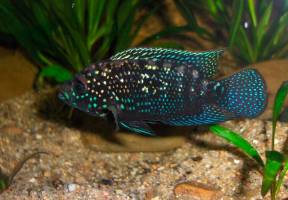
Cichlasoma bee, as all representatives of the genus has weak differences between the sexes. Males are slightly larger than females, have a more pronounced frontal tubercle. Accurately determine the sex of the individual can be determined only during spawning. Producers have anal tubercles. In the male, directed forward having the form of a pistol trigger, in the female – has the shape of an inverted truncated pyramid.
Cichlasoma octopus aquarium maintenance
The content is complex, despite all assurances to the contrary of some authoritative sources. Despite the difficulties – the content is interesting and fascinating, not to mention the amazing beauty of coloration of C. bee.
Aquarium volume
Difficulty number one. Like most of its congeners, C. eightstriped territorial fish, it requires a large body of water. One pair requires an aquarium of one hundred liters. With insufficient living space or if the aquarium is overpopulated, there will be constant quarrels and scuffles, sometimes with unfortunate outcome.
Soil
Difficulty number two. Cichlasoma biocelatum is prone to digging up all the soil, so you need to use granite crumbs or small pebbles to cover the bottom. In extreme cases, you can use river coarse sand, which before use should be washed more thoroughly than for other fish. At the bottom should be sure to arrange a few grottos of large stones or put on the side of a few empty pottery pots. Better yet, “both, and you can do more of both.” The “bee” will choose for itself the shelter which is more to its liking. Or maybe disdainfully examining all that you offered her, will turn around and proudly swim to dig their trenches just in the place where you think so beautifully looked Wallisneria spiral. “Who knows what they are bees.”
Cichlasoma octopus and Plants
Difficulty number three. If your pets think that you have bad taste and placed the plants in the wrong place, they will rip them out without regret. Many aquarists recommend that in general aquarium for Ts. bee decorated with artificial plants. I am almost ready to agree with this, but still advise you to try to decorate your underwater garden with live flora. True plants should be selected hardy with a powerful rhizome or fast growing, floating in the thickness and surface of the water. You can try to plant cryptocorina aponogetonolistnyaya, Echinodorus amazonian, elodea.
It is better to plant rooting plants in pots. However, if C. octopus decides that this very pot is ideal for hiding its eggs, the plant will be ripped out, and the pot itself will be most carefully freed from the soil, as well as cleaned of its remains. But after a few trials and errors, maybe your opinion of beauty will find some compromise with the opinion of your pets. Although it should be noted that this will require some patience on your part.
Water parameters
Difficulty number four. For the novice amateur, probably the greatest. C. biocelatum is very
is sensitive to the chemical composition of the aquatic environment. Ammonia and nitrite should have values tending towards zero. Nitrates should be less than 40mg/l. This is usually achieved by powerful biofiltration, as well as frequent changes of one-fifth to one-third of the water. It should be tempered for about two days with constant aeration. Although literary data often indicate that ts. eight-striped unpretentious, if you do not check the amount of ammonia, nitrite and nitrates, will not clean the water from them, of course, the fish will not die immediately, but will live about 4 – 5 years instead of God gave them 10 years. Optimal temperature for content should be considered 24 – 26 degrees Celsius. Hardness can vary greatly, but it is better not to experiment unnecessarily, and keep it at the level of 10 – 15 °dH. pH-7.
Lighting
The eight-striped cichlasoma likes dim light. Although it looks more ornate in bright light.
You can initially focus on the total power of fluorescent lamps about 0.3 – 0.5 W/l. And then play with selecting illumination so that C. biocelatum do not sit constantly behind shelters because of bright light, without losing their attractiveness because of excessively dim lighting.
Aeration and filtration as already indicated are mandatory. If you have acquired these beauties without having previously equipped for them a home, then at first it is necessary to change the part of the water more often to free the reservoir from harmful to them products of their vital activity. But first of all, there is not always time to do three – four times a week to change the water. Secondly, unfortunately, tap water is not always properly purified from all harmful impurities. Therefore, you will have to find funds for the equipment of a biological filter. This is the fifth difficulty, which will require from you not only time and effort, but also additional monetary investment.
Compatibility of Cichlasoma octopus
C. octopus, as already indicated fish territorial, predatory. It can get along only with other representatives of the genus, and only with those that are larger than her. So can also coexist with them relatively peacefully some catfish, but the latter can devour the eggs deposited by “bees” than cause them a mutual scuffle from annoyance over the loss of offspring.
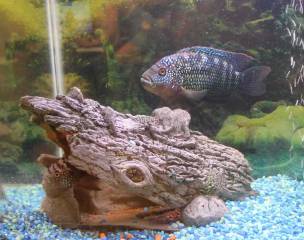
Cichlasoma octopus Nutrition
Cichlasoma octopus is a predator and needs live food. Of the commonly used can be used moths, trumpet fish, shrimp, small forage fish. You can use seafood as food. Despite the fact that C. biocelatum predator, it still needs vegetable regular feeding – scalded with boiling water shredded leaves of lettuce, cabbage, dandelion, dried nettles, oat flakes. Feeding should be once a day, avoiding overeating. Once – twice a week it is necessary to arrange unloading days. It should be borne in mind that when the joint content of some species of small fish, after the next day of unloading can be missing in the flock of one – two individuals.
Cichlasoma octopus Breeding
Under good keeping conditions, there are usually no difficulties with reproduction. Spawn can spawn in the same aquarium in which they are kept. However, it should be noted that during spawning C. biocelatum becomes aggressive. Fight she knows how to fight. Therefore, if you decide to get offspring from these beautiful fish, and they are kept together with other fish, it is better to put them away in a spawning aquarium of about 100 liters.
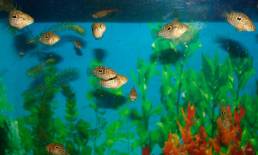
Spawning is stimulated by increasing water temperature to 26 – 28 degrees Celsius, as well as changing two volumes of water in one week. Choosing a secluded corner of the producers will clean it from interfering plants, and then preparing the appropriate place to lay eggs. Substrate for spawning is usually a flat surface of a stone, tipped on the side of the flower pot or completely cleaned from the ground part of the bottom glass. The female lays eggs, from which about 36 hours later the larvae emerge, and after two to three days the fry swim.
Cichlasoma biocenatum takes care of its offspring for up to two months. Some fish breeders take the eggs away from the producers immediately after laying. It seems reasonable to me to leave the fry under the care of the parents for up to four weeks. Despite the fact that cichlasoma biocelatum is able to independently within some limits to meet the needs of their offspring in the food at the expense of the secretion secreted by skin glands.
When to start feeding the fry?
It is not a good idea to leave producers solely to be eaten by their offspring. In nature, it is justified, there is an abundance of other food, and skin secretion performs only an auxiliary role. With artificial content should start feeding fry immediately after they swim. Starter food – nauplii crustaceans. Give them should be very small portions of 5-6 times a day. As the fry grow, they should be fed larger types of food.
Cichlasoma eight-striped fish somewhat wayward, predatory, territorial and difficult to keep. But the beauty of these representatives of the underwater kingdom and the peculiarities of their behavior, which make watching them even more fascinating, translate all of the above difficulties in the category of a few annoying trifles, overcoming which you will not once get pleasure from the sight of a beautiful aquarium and a well-deserved sense of pride. Properly designed aquarium for such a fussy as cichlasoma bee can be a reason for well-deserved pride.
